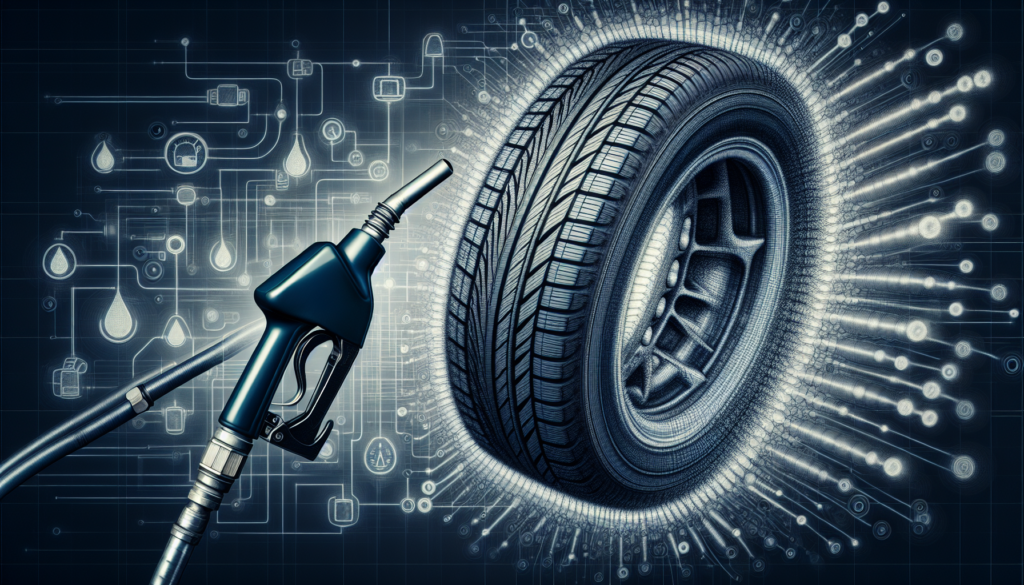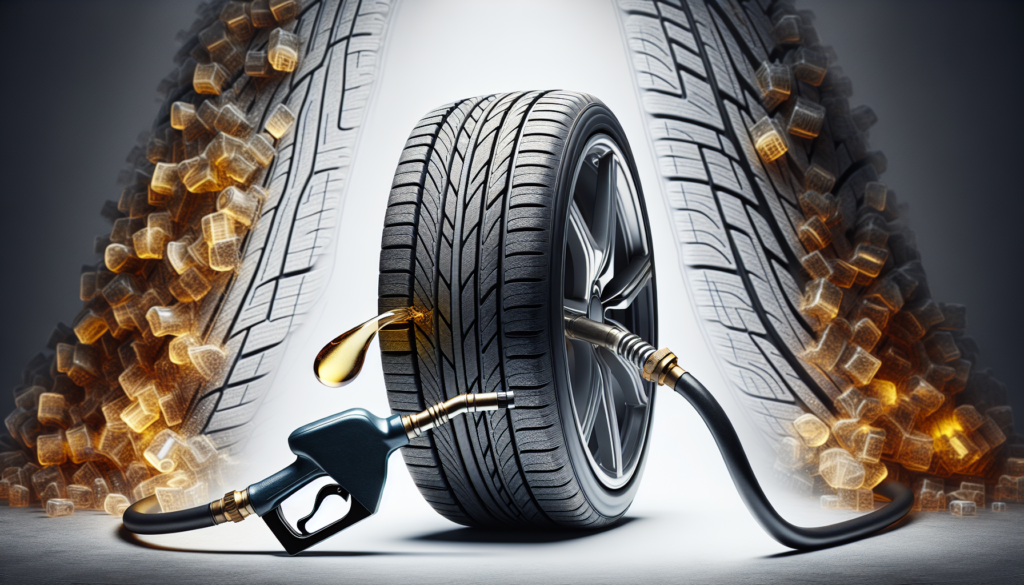You may not realize it, but the alignment of your vehicle’s wheels plays a crucial role in determining your fuel efficiency. When your wheels are properly aligned, they roll smoothly and evenly, causing less resistance and ultimately saving you money at the pump. On the other hand, if your wheels are misaligned, they can cause your tires to wear unevenly, leading to increased fuel consumption. So, next time you hit the road, remember that a simple wheel alignment can go a long way in improving your fuel efficiency and keeping your wallet happy.
Importance of Wheel Alignment
Definition of wheel alignment
Wheel alignment refers to the adjustment of the angles of the wheels so that they are parallel to each other and perpendicular to the ground. It involves altering the suspension components to ensure that the tires are in optimum position and angle when the vehicle is in motion.
Purpose of wheel alignment
The primary purpose of wheel alignment is to ensure that the tires make maximum contact with the road surface, providing optimal grip and traction. Proper alignment also helps to reduce tire wear and tear, improve steering and handling, enhance fuel efficiency, and promote a smoother and more comfortable ride experience.
Effects of improper wheel alignment
Improper wheel alignment can have a detrimental impact on various aspects of your vehicle’s performance. It can lead to uneven tire wear, premature tire wear, and even tire sidewall damage. Additionally, poor alignment can increase rolling resistance, reduce aerodynamic efficiency, raise mechanical friction, and result in uneven weight distribution. All of these effects can significantly affect your vehicle’s fuel efficiency.
Factors Affecting Fuel Efficiency
Tire rolling resistance
One of the key factors influencing fuel efficiency is tire rolling resistance. Rolling resistance refers to the amount of force required to move the tires forward. When the wheels are properly aligned, there is minimal resistance, resulting in less effort required to propel the vehicle forward. However, improper wheel alignment increases rolling resistance, which in turn leads to higher fuel consumption.
Aerodynamic drag
Aerodynamic drag is another factor that affects fuel efficiency. When the wheels are misaligned, the vehicle may experience greater aerodynamic drag, resulting in increased resistance to movement. This increased drag requires more power from the engine, leading to higher fuel consumption.
Mechanical friction
Mechanical friction refers to the resistance that occurs within the mechanical components of the vehicle, such as the wheel bearings, suspension system, and steering linkage. When the wheels are not aligned properly, it can cause increased mechanical friction, which can reduce fuel efficiency. Proper wheel alignment ensures that these components work smoothly, minimizing friction and optimizing fuel efficiency.
Weight distribution
Proper weight distribution is crucial for maintaining optimal fuel efficiency. When the wheels are misaligned, it can cause an uneven distribution of weight, with some tires bearing more load than others. This uneven distribution can put additional strain on certain tires, leading to increased rolling resistance and decreased fuel efficiency. Proper wheel alignment helps to distribute the weight evenly, reducing the strain on individual tires and improving fuel efficiency.

Understanding Wheel Alignment
Camber
Camber refers to the vertical tilt of the wheels when viewed from the front or rear of the vehicle. Positive camber means that the top of the tire is tilted outward, while negative camber means that the top of the tire is tilted inward. Proper camber alignment ensures that the tires make even contact with the road surface, promoting better handling and reducing tire wear.
Toe
Toe alignment refers to the angle at which the tires point in relation to each other when viewed from above. Toe-in means that the front edges of the tires are closer together than the rear edges, while toe-out means that the front edges are farther apart than the rear edges. Proper toe alignment helps to maintain straight-line stability and reduce tire wear.
Caster
Caster refers to the angle at which the steering axis tilts from the vertical when viewed from the side of the vehicle. It is responsible for ensuring proper steering and stability. A positive caster angle tilts the steering axis toward the driver, while a negative caster angle tilts it away from the driver. Proper caster alignment contributes to better steering control and improved vehicle stability.
Thrust angle
Thrust angle refers to the angle between the geometric centerline of the rear axle and the direction in which the vehicle is moving. It is determined by the alignment of the rear wheels and affects the vehicle’s tracking and stability. Proper thrust angle alignment helps to prevent the vehicle from veering to one side and promotes a straight and stable ride.
Wheel Alignment and Tire Wear
Uneven tire wear
Improper wheel alignment can lead to uneven tire wear. When the wheels are not aligned properly, certain areas of the tire may bear more weight and experience increased friction with the road surface. This can result in uneven wear patterns, such as excessive wear on the inner or outer edges of the tire. Uneven tire wear not only reduces the lifespan of the tires but also negatively impacts fuel efficiency.
Premature tire wear
In addition to uneven tire wear, improper wheel alignment can also cause premature tire wear. Excessive rolling resistance, increased drag, and uneven weight distribution resulting from misalignment can cause the tires to wear out prematurely. This not only necessitates frequent tire replacements but also reduces fuel efficiency due to the increased friction and resistance.
Tire sidewall damage
Improper wheel alignment can also lead to tire sidewall damage. When the wheels are not aligned properly, the tires may experience increased stress and strain, especially on the sidewalls. This can result in sidewall bulges, cuts, or even punctures, compromising the structural integrity of the tire. Damaged sidewalls not only pose a safety risk but also impact fuel efficiency.

Effects of Poor Wheel Alignment on Fuel Efficiency
Increased rolling resistance
One of the major effects of poor wheel alignment on fuel efficiency is increased rolling resistance. Misaligned wheels result in uneven tire contact with the road surface, causing the tires to scrub and generate more friction. This increased rolling resistance requires the engine to work harder to overcome the resistance, leading to higher fuel consumption.
Reduced aerodynamic efficiency
Improper wheel alignment can also reduce the aerodynamic efficiency of the vehicle. When the wheels are not aligned properly, it disrupts the smooth airflow around the vehicle, resulting in increased aerodynamic drag. A higher drag force requires more power from the engine to maintain a given speed, resulting in reduced fuel efficiency.
Higher mechanical friction
Misaligned wheels can cause higher mechanical friction within the vehicle’s components. This friction occurs as components such as wheel bearings, suspension systems, and steering linkages work against misalignment. The increased friction requires additional energy input, leading to decreased fuel efficiency.
Uneven weight distribution
Poor wheel alignment can also lead to uneven weight distribution on the tires. When the wheels are not aligned correctly, some tires may carry more weight than others. This uneven distribution results in increased rolling resistance on specific tires, leading to decreased fuel efficiency.
Fuel Efficiency Improvement with Proper Wheel Alignment
Reduced rolling resistance
Proper wheel alignment reduces rolling resistance by ensuring that the tires make maximum contact with the road surface. When the wheels are aligned correctly, the tires roll smoothly, minimizing friction and reducing rolling resistance. This reduction in resistance helps to improve fuel efficiency by requiring less effort from the engine to keep the vehicle moving.
Improved aerodynamics
Correct wheel alignment contributes to improved aerodynamics. By aligning the wheels properly, the vehicle’s body remains in an optimal position, reducing the disruption of airflow around the vehicle. This enhanced aerodynamics helps to reduce drag, resulting in improved fuel efficiency.
Reduced mechanical friction
Proper wheel alignment ensures that the mechanical components of the vehicle work smoothly and efficiently. With aligned wheels, there is minimal friction within the wheel bearings, suspension system, and steering linkage. Reduced mechanical friction results in less energy loss and improved fuel efficiency.
Optimized weight distribution
Proper wheel alignment helps to distribute the vehicle’s weight evenly across all tires. Even weight distribution reduces the strain on individual tires and minimizes rolling resistance. By optimizing weight distribution, proper wheel alignment promotes better fuel efficiency.

Measurement and Adjustment of Wheel Alignment
Alignment check
Wheel alignment should be checked periodically or whenever you notice signs of misalignment. Alignment checks involve measuring various angles and parameters of the wheels to determine their alignment. Professional alignment equipment is used to accurately assess the camber, toe, caster, and thrust angle of each wheel.
Wheel alignment adjustment
If a misalignment is detected during an alignment check, wheel alignment adjustments will be necessary. Adjustable suspension components are used to alter the angles of the wheels to bring them into proper alignment. These adjustments ensure that the wheels are parallel to each other and perpendicular to the ground, according to manufacturer specifications.
Alignment specifications
Alignment specifications vary depending on the make and model of the vehicle. Manufacturers provide specific guidelines and tolerances for each alignment parameter. Professionals use these specifications to accurately align the wheels and ensure optimal performance and fuel efficiency.
Frequency of Wheel Alignment Checks
Manufacturer recommendations
Manufacturers typically provide recommendations for the frequency of wheel alignment checks. These recommendations can vary based on factors such as driving conditions, vehicle usage, and suspension components. It is advisable to consult the vehicle’s owner manual or contact the manufacturer to determine the recommended alignment check intervals.
Signs of misalignment
Certain signs indicate potential wheel misalignment and should prompt an alignment check. These signs include uneven or rapid tire wear, the vehicle pulling to one side, steering wheel vibrations, or a crooked steering wheel when driving straight. If any of these signs are observed, it is important to have the wheel alignment checked promptly.
Mileage-based intervals
In addition to manufacturer recommendations and signs of misalignment, mileage-based intervals can serve as a guideline for wheel alignment checks. As a general rule of thumb, it is advisable to have the wheel alignment checked every 10,000 to 12,000 miles or at least once a year, whichever comes first. Regular checks help identify and address alignment issues early on, preserving fuel efficiency and prolonging tire life.

Professional Wheel Alignment vs. DIY
Benefits of professional alignment
Getting a professional wheel alignment offers several advantages. Professional technicians have the expertise and specialized equipment to accurately measure and adjust wheel alignment. They can ensure precise alignment according to manufacturer specifications, maximizing fuel efficiency. Additionally, professional alignment provides peace of mind, knowing that the job has been done correctly and that all alignment parameters have been properly addressed.
DIY alignment methods
While professional alignment is recommended, there are some DIY methods available. These methods typically involve using alignment tools such as string gauges or laser pointers to attempt alignment adjustments at home. However, it is important to note that DIY methods may lack accuracy and precision, potentially leading to further alignment issues or improper adjustments.
Limitations of DIY alignment
DIY alignment methods have their limitations. The lack of specialized equipment and expertise can result in inaccurate measurements and adjustments. Without the proper knowledge and tools, it is difficult to achieve the same level of precision as with professional alignment. Moreover, DIY methods may not account for all alignment parameters, leading to inconsistent and subpar results. It is generally advisable to leave wheel alignment to the professionals to ensure optimal fuel efficiency and vehicle performance.
Conclusion
Proper wheel alignment plays a crucial role in ensuring optimal fuel efficiency and overall vehicle performance. It reduces rolling resistance, improves aerodynamics, minimizes mechanical friction, and optimizes weight distribution, all contributing to enhanced fuel efficiency. Regular alignment checks, adherence to manufacturer recommendations, and addressing signs of misalignment are essential for maintaining fuel efficiency and extending the lifespan of your tires. While DIY alignment methods may seem tempting, professional alignment offers superior accuracy and precision to achieve the best results. With proper wheel alignment, you can enjoy a smoother ride, improved handling, and most importantly, maximize your fuel efficiency.


